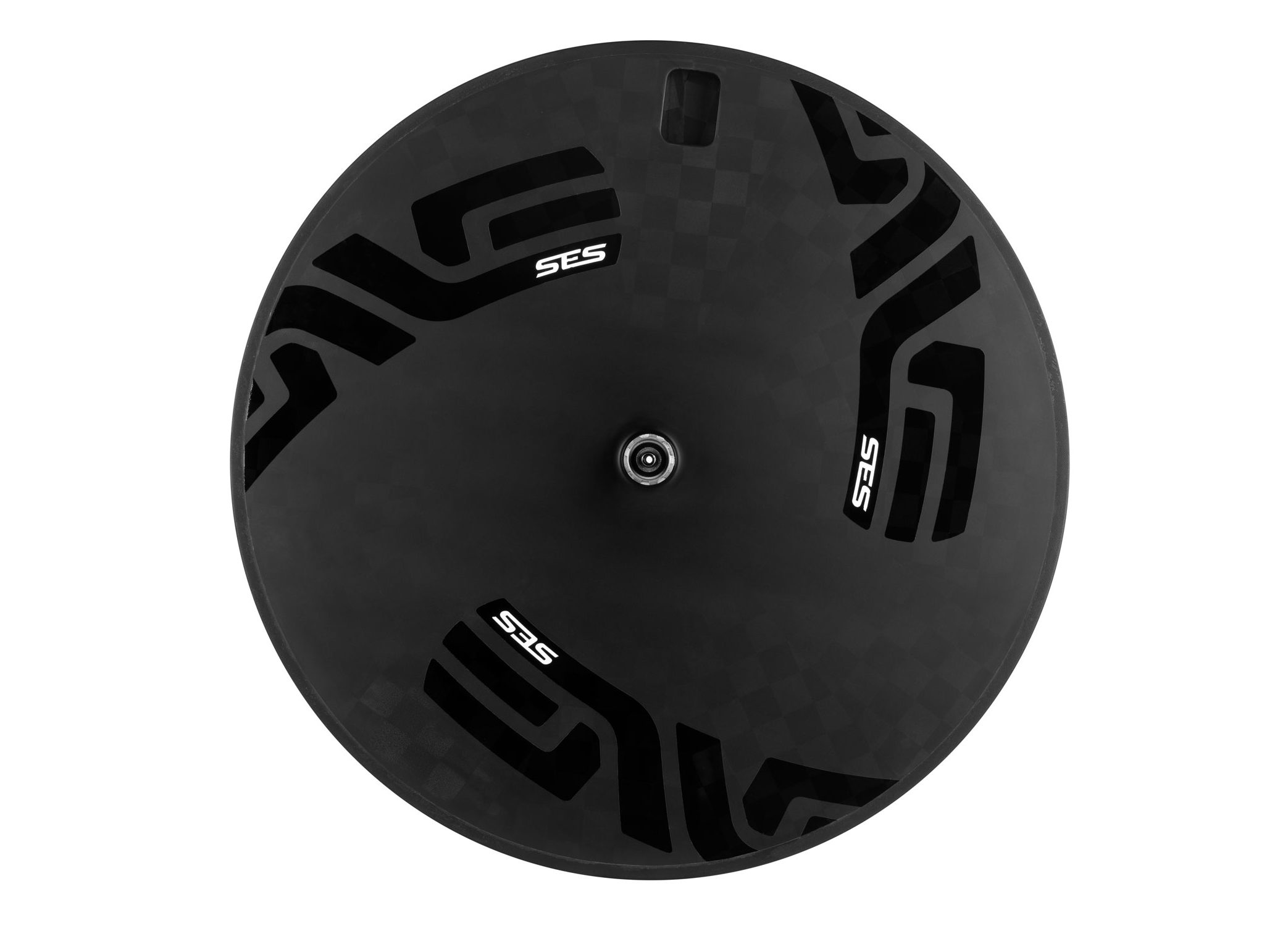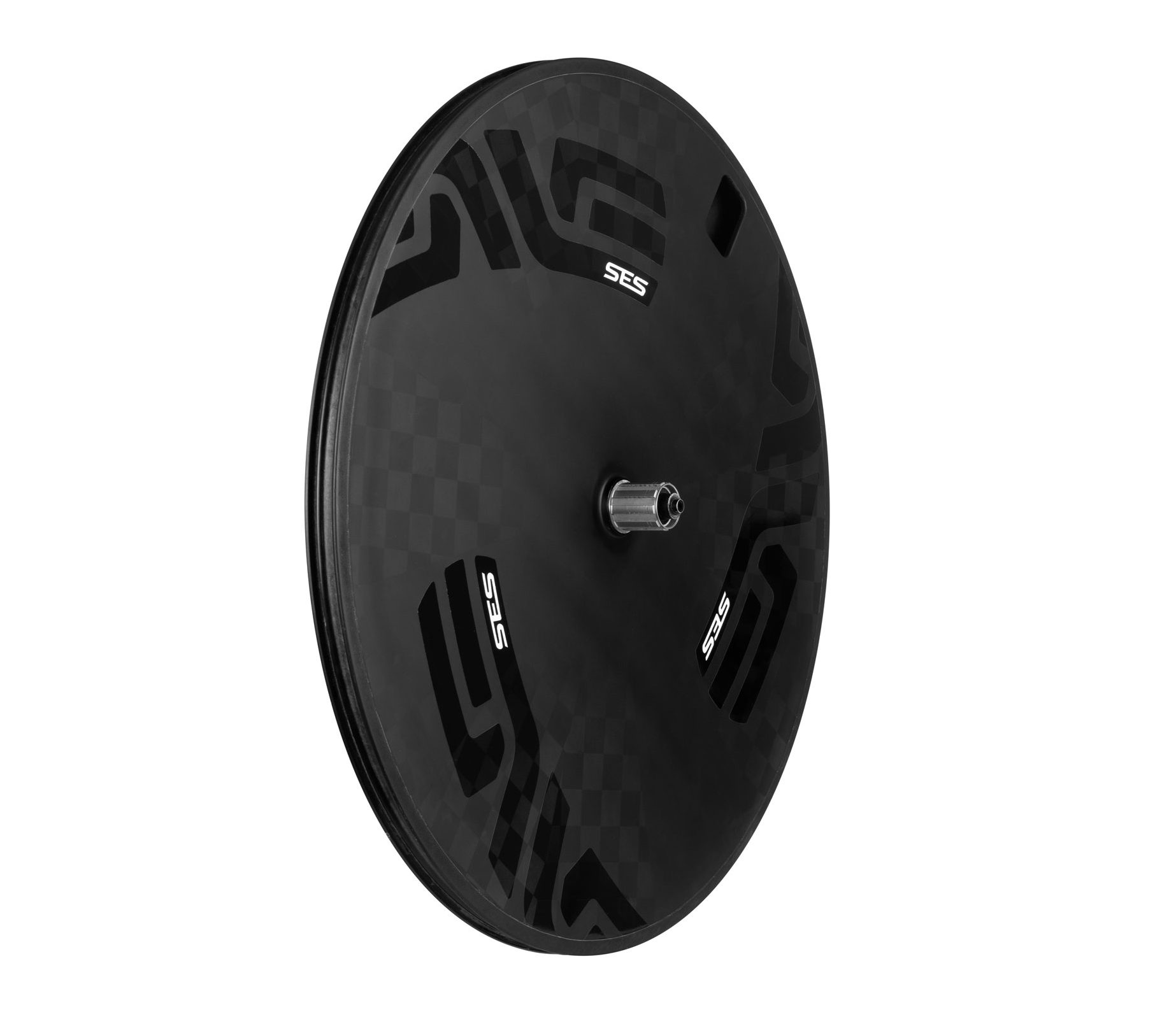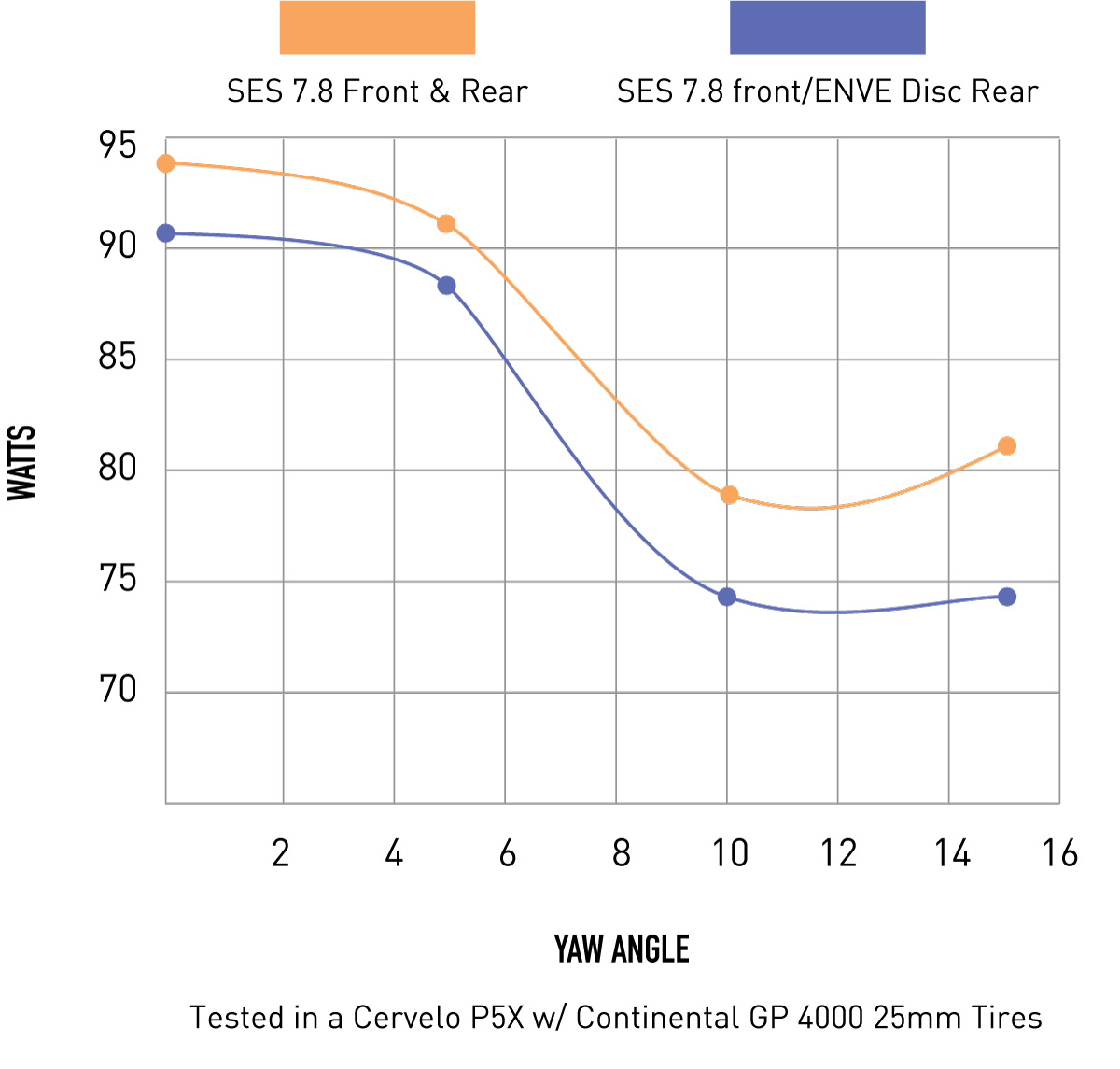When you’re looking for the fastest rear wheel, you reach for a disc – if you’re averaging faster than 27mph. ENVE still feels that if your average speed is under that 27mph/43kph average, you’d be better suited by the SES 7.8 rear wheel. But for those cranking the big watts, a disc wheel can indeed be a faster set up.
Which is why, after two years in development, the Smart ENVE System is expanding with the addition of a disc wheel. Available in rim brake or disc brake configurations, the SES Disc features a one-piece molded construction that only uses
bonding at the hub. The rest of the wheel is one-piece and molded to a machined PMI core which gets layered between Spread Tow Carbon Fibers. The result is an incredibly strong wheel that is also quite light at 1225g.
The wheel is also tubeless compatible which apparently was not easy to accomplish. According to ENVE’s engineer Clint Child, “tubeless compatibility proved to be a challenging proposition in the development of the SES Disc, but given the performance advantages inherent to tubeless, it was a performance requirement for this project. The bead stiffness of a quality tubeless compatible road tire applies enough pressure to the rim that it relieves laminate tension and the wheel moves out of dish. We solved this problem through a combination of laminate design and tooling offset so that when a tubeless tire is installed and inflated, the wheel moves into dish.”
Whether running tubeless or standard clincher, the wheel is optimized for 25mm tires. Rim brake versions will include ENVE’s full carbon molded brake surface texture for improved braking in wet or dry conditions. The disc brake versions will use a Centerlock disc hub which is fully made from aluminum with a 40t ratchet freehub. The rim brake hub uses the same freehub, but with an aluminum driveside hub shell and carbon non-drive hub shell.
Both wheels are covered by ENVE’s five-year warranty and will sell for $2700 each. Rim brake versions will ship by the end of October while the disc brake options will ship a the end of November.



